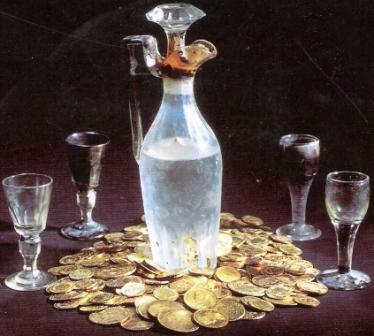Chloe Larkin –
The modern-day get rich quick possibility seen on the Discovery Channel’s Alaska shows like Gold Rush and Bering Sea Gold have sparked interest from people thinking about trying their hand at mining for the precious metal the way it’s done on TV.
While Alaska seems to offer plenty of this shiny metal for the harvesting, it’s much more entailed than just going to the state and mining than meets the eye, warns the state of Alaska officials.
In the early part of the 20th century, a gold rush took place as word spread of the gold just lying in the river basins and on the shores of the Bering Sea.
During this time Nome, Alaska’s population multiplied with prospective miners along with gambling joints, saloons and prostitutes, according to the Alaskan Dispatch.
The instant money coming out of the ground in the form of gold brought all kinds of criminal activity to the area as people put up a tent city to live in. This is not an occasion the state wants to duplicate with a modern-day gold rush.
The Alaskan Department of Natural Resources spells this out for the prospective modern-day gold miner who plans on making their way to the areas in the state, like the shores of the Bering Sea, where gold is found.
The homepage for this department has a disclaimer redirecting anyone with the thoughts of mining off the shores of Nome. It says that there are no leases for mining available in the area now with none expected to become available until the ones in place now expire in 2021.
Phone calls come in at the rate of a couple a dozen a day from TV viewers, who have seen one of the gold mining shows wanting some more information on opening their own claim.
They’re told the same thing, the last leases were given out in the fall of 2011 and probably won’t happen again until they expire in another 10 years.


